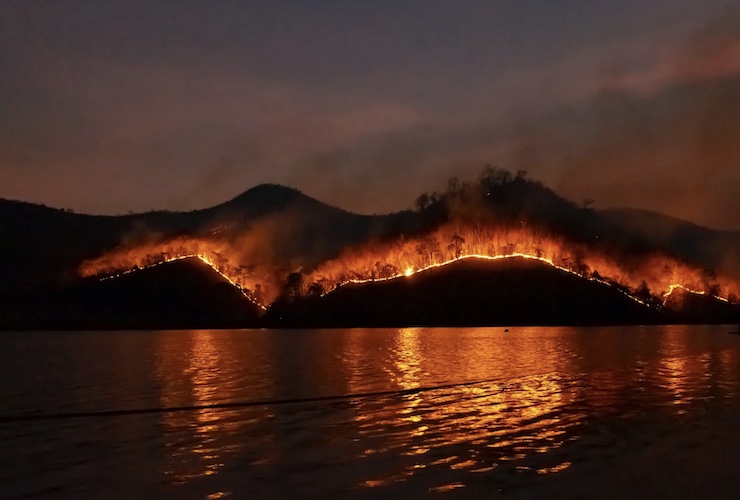
Wildfires cause some $20 Billion in property damage and several dozen deaths annually – and unfortunately due to climate change, the yearly toll is rising. Predicting and containing wildfires has become a top national priority but is also of special concern in states like California where most wildfires occur. It stands to reason that drones, equipped with Beyond the Line of Sight (BLOS) visual technology, predictive analytics and rapid communications and transport ability, might become an integral part of America’s firefighting arsenal. But it hasn’t happened. Instead, states continue to rely heavily on helicopters and other manned aircraft to assist firefighters on the ground. And each year, these expensive aircraft are lost or suffer damage and dozens of brave firefighters are injured or die from exposure to blazing heat and flames.
Sadly, the current public discourse on the topic of drones and wildfires is decidedly negative. That’s largely because many private hobbyists as well as members of the news media, in their zeal to report on wildfires as they occur, often fly their aircraft including drones into an ongoing fire-fighting operation interfering with and undermining official efforts at containment. Under current rules, states are obligated to pull back and even cease their own containment efforts to avoid collisions with these intruders. Predictably, the Federal Aviation Administration (FAA) has gone so far as to describe the combination of drones and wildfires as a “toxic mix.”
This is understandable but regrettable. In fact, the official stigma that continues to surround drone activity has probably delayed a much-needed public debate over the positive role that drones, under proper guidance and supervision, could play in combating wildfires and limiting their destruction. In recent years, some academics have begun to tackle the issue. In fact, a little noticed 2018 paper prepared by two scholars, Mauro S Inocente and Paolo Grasso, of the Smart Vehicles Control Laboratory at Coventry University on the UK, entitled “Swarms of Autonomous Drones Self-Organized to Fight the Spread of Wildfires” makes a strong case for placing drones at the heart of our nation’s wildfire containment efforts.
The basic idea, validated through basic simulation modeling, is that drones could create a “swarm” effect that would surround and overwhelm a fire or placed near its center disrupt the fire’s ability to spread. Drones could aid existing firefighting operations by demonstrating where their containment resources could be deployed and applied most efficiently or even better, might intervene autonomously to help direct and implement the entire campaign. While the authors admit that their simulation is more a “proof of concept” based on mathematical modeling than a real-world analysis of a prospective drone deployment, they suggest that it lays the foundation for further research.
Officials at the National Aerospace Administration (NASA) have begun to take notice of the issue – and not just abstractly. Working with a handful of interested companies, NASA is beginning to sketch out a range of specific roles that drones might play in wildfire containment. Apparently some drone companies are already participating in wildland firefighting, if only on the margins.
In April 2022, the technology news magazine GRID summarized these fledgling but rapidly accelerating efforts as follows: “There are now various agencies and companies testing or using drones in virtually the entire life cycle of a wildfire, from early detection and prevention through fighting active blazes to cleanup and reforestation.” Operationally, drones could have several distinct advantages over traditional aircraft, their supporters argue. For example, undeterred by the threat of pilot death, drones could fly into the heart of a fire, helping to predict its likely development. In addition, larger drones carrying water or retardant to drop on fires at night, making the unmanned craft a de facto “second shift” of firefighting that fills in when the crewed aircraft are grounded. At daybreak, with the big planes back on the job, the two types of craft could work in concert, with smaller drones trouble-shooting and coordinating the overall effort.
Currently, these ideas remain largely hypothetical, but official interest in exploring them is growing. The average annual federal costs of wildfire suppression are now more than $2 billion — and that doesn’t include state agency costs. The Forest Service’s 2023 budget request includes $2.7 billion for “wildland fire management,” an increase of $751 million from the previous year. As GRID notes, “Anything that can help firefighters work smarter rather than harder might help bring down those costs.” Drones, properly deployed – in close cooperation, not competition, with conventional firefighting resources – could well be instrumental to that effort. With climate temperatures rising and the high season of summer wildfires rapidly approaching, time is of the essence.
|